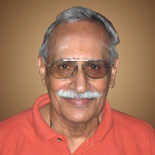|
Go to Part 58 IV - Nididhyäsanam as set out in Bhagavadgétä Contemplation is set out in Bhagavadgétä [357] as yoga. In it, the physical preparation consists of choosing a secluded, undisturbed place and a seat which is neither too low nor high and neither too hard nor too soft. The body, neck and head have to be erect and the external objects should be kept out of sight by looking as though at the tip of the nose. The breathing should be even. The mental preparation consists of giving up all desires and withdrawing the mind and sense organs from all other activities with the help of the discriminating intellect. The meditation consists of abiding in the self with a tension-free, undisturbed, withdrawn and one-pointed mind. If the mind gets distracted, it is brought back to one’s own self so that the flow of similar thoughts is constant. When there is absorption of mind, abidance becomes effortless. Thus, the contemplator effortlessly abides as the self with the knowledge that “I am the self”. The abidance in ätmä is purely in the form of clear knowledge. This is called jïäna-samädhi.
The state of abidance as ätmä is called jïäna-niñöhä [358] (being the knowledge) or brähmé-sthiti (being Brahman) or brahma-nirväëam (absorption as Brahman) or svätmanyavasthänam (established as the self). The person with jïäna-niñöhä is called a sthitaprajïa or as person for whom the knowledge of ätmä stays without any doubt, vagueness or error. The knowledge that “I am the whole”, “paraà brahma aham asmi” is well established and well rooted. He remains in his true nature effortlessly in and through all transactions. The sthitaprajïa is also referred to simply as a jïäné or a wise person. As we shall see, he is a jévan-mukta, or a person who is free even while living in the body.
I - The changes that ätmä-jïäna brings about Çruti says that the person who knows Brahman becomes Brahman itself and asserts that he attains the infinite [359] and becomes immortal here itself [360]. The rationale behind this assertion is simple and is as follows:
The person who abides in Brahman-knowledge ceases to be a jéva. He is called the jévan-mukta, or the person who is freed even while living [362]. This position does not change even when he transacts with the world. He stays in his true nature regardless of the activities of the body-mind-sense-complex [363]. He does not have to remove a single thought from his mind to be what he is, even as there is no need to remove the wave to discover the water, once it is known that wave is water. For him, there is nothing, which is ever other than Brahman, and that Brahman is ever himself [364].
The jévan-mukta continues to have the same old body with the same old features. The body does not disappear along with self-ignorance, as only an existent body is mistaken to be ätmä. It is not like the non-existent snake for it to disappear on being known to be a rope. It is like the colorless crystal continuing to appear to be colored even after knowing that the color belongs to the flower and not to the crystal. Thus, the body-mind-sense-complex continues to exist and is experienced even after the erroneous self-knowledge has been corrected [365]. The jïäné continues to function in it, but without the “I” sense and “my” sense with reference to it. His bio-data remains the same for the world but he has the understanding that it pertains only to the body-mind-sense-complex and not to ätmä. He uses it merely for transacting with the world without any sense of identification with it. He continues to experience the body with its physical pain and disease; but he does not consider them to be his affliction but that of the body and is objective in dealing with it. What he is free from is the mental suffering that usually arises out of owning the physical discomfort as one’s own. He continues to rely on the world for meeting his physical needs as before. Only, he is free from the insecurity that this situation had earlier caused.
357. In the sixth chapter. Go to Part 60
|
|||
|
|||


www.advaita.org.uk
Advaita for the 21st Century



Vedanta - Part 59
VEDĀNTA the solution to our fundamental problem
D. Venugopal

D. Venugopal is a student of Swami Paramarthananda and a direct disciple of Pujya Swami Dayananda. He has successfully completed the long-term residential course in Vedanta and Sanskrit conducted from May 2002 to July 2005 at the Arsha Vidya Gurukulam, Anaikatti.
Go to CONTENTS
Biography
Buy from Amazon UK
. Available from Bharatiya Vidya Bhavan centers at London, New York and Sydney.
. Also through the IBH Books & Magazines Distributors Pvt. Ltd. - contact contact@ibhworld.com. In case of difficulty,pvsankarankutty@bhavan.info can be contacted.
BOOK DETAILS
Publisher: Bharatiya Vidya Bhavan
ISBN: 978-81-7276-457-9
Format : Paperback
Pages: 324
List Price: US$7.00
Where to Buy
AUTHOR DETAILS

